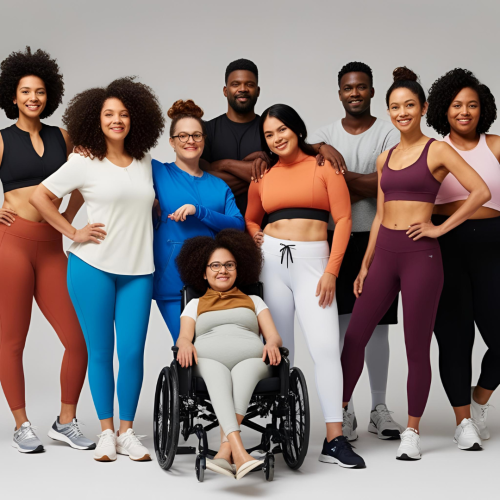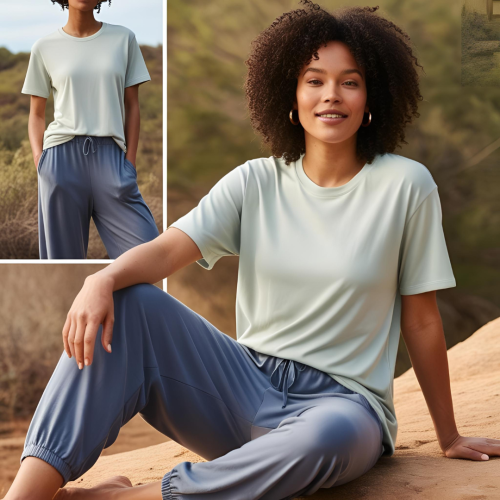When it comes to clothing, many autistic individuals experience heightened sensitivity to certain textures, seams, or labels, making traditional clothing uncomfortable and even distressing. Fortunately, there are simple and effective DIY solutions to adapt regular clothes into sensory-friendly garments. By making a few small adjustments, you can significantly improve comfort and reduce sensory overload for those with autism.
This guide will walk you through practical tutorials for adapting everyday clothing items to make them more sensory-friendly, ensuring comfort without compromising on style.
Why Adapt Clothes for Autistic Individuals?
Autistic individuals often experience sensory processing differences, meaning their brains interpret sensory information differently. Common clothing issues for those on the autism spectrum include:
- Itchy seams or tags
- Rough fabric textures
- Tight-fitting clothes or restrictive cuts
- Overwhelming colors or patterns
The goal of adapting clothing is to reduce discomfort and avoid sensory overload, allowing individuals to focus on their daily activities without being distracted by what they’re wearing.
1. Removing or Replacing Tags
One of the most common complaints from people with sensory sensitivities is the discomfort caused by clothing tags. Whether they’re sewn inside the neck or at the waistband, tags can cause itching, irritation, and frustration. Fortunately, this is an easy fix!
How to adapt:
- Remove tags: Use a seam ripper or a pair of sharp scissors to carefully cut the tags off. Be sure to remove any leftover threads that might also cause discomfort.
- Replace with printed labels: If the brand requires a label, consider replacing it with a printed design directly on the fabric or using fabric markers to write important information like size and care instructions. This eliminates the need for any stitching that might irritate the skin.
2. Flattening or Removing Seams
Seams can cause discomfort if they rub against the skin in sensitive areas. A quick and easy way to make clothes more comfortable is by flattening or removing the seams altogether.
How to adapt:
- Use a flat-felled seam or French seam: These sewing techniques hide the raw edges of the fabric and reduce the risk of irritation. If you’re sewing a new garment, this is an easy technique to incorporate into the design.
- Inverting seams: If you’re dealing with an existing garment, you can invert the seams so the smoother side touches the skin. This way, the rough part of the seam stays on the outside of the garment.
- Seamless clothing: Opt for clothes with minimal seams or design pieces with a seamless construction. For example, using a knit fabric can allow for a seamless fit, reducing any discomfort caused by traditional stitching.
3. Softening the Fabric
Fabric texture plays a major role in comfort, especially for people with sensory sensitivities. Rough fabrics like polyester, wool, or synthetic materials can be irritating, whereas softer fabrics like cotton, bamboo, or modal are gentler on the skin.
How to adapt:
- Fabric softener: Soak the clothing in fabric softener or use a DIY softening solution (such as vinegar) to soften fabrics. This will help make stiff, scratchy fabrics more comfortable.
- Use natural fibers: If possible, replace rough fabrics with softer, more breathable materials like organic cotton, bamboo, or modal. These are hypoallergenic, breathable, and gentler on sensitive skin.
- Pre-wash fabrics: Before sewing or altering garments, pre-wash fabrics multiple times to soften them. New fabrics often contain chemicals that can irritate the skin, so washing helps remove these residues.
4. Replacing Tight Waistbands
Tight waistbands can cause discomfort and restriction, particularly for those with sensory sensitivities. Instead of opting for a traditional waistband, there are several alternatives that are more comfortable and accommodating.
How to adapt:
- Elastic waistbands: Replace traditional waistbands with soft, wide elastic bands that provide flexibility and comfort without the restriction of a tight fit.
- Drawstrings: For more adjustable comfort, consider adding a soft, non-abrasive drawstring to the waistline, allowing for easy adjustment without causing discomfort.
- Waistband-free design: If you’re feeling adventurous, you can even remove the waistband entirely and replace it with a wrap-style design or a soft, stretchy fabric band that can be secured with velcro or snaps.
5. Adding Sensory-Friendly Pockets
For some individuals, pockets are an essential part of comfort, but traditional pockets can sometimes be bulky or irritating. Adding or adjusting pockets in clothing can help provide a sensory-friendly solution.
How to adapt:
- Sew soft, inside-out pockets: Instead of traditional external pockets, sew soft, hidden pockets inside the garment. Use soft fabrics like cotton or fleece to create a tactile, calming effect.
- Velcro or magnetic closures: For easier access, add velcro or magnetic closures to pockets, so they don’t require buttons or zippers that may cause discomfort.
6. Choosing Sensory-Friendly Colors and Patterns
While texture is the primary consideration in sensory clothing, color and pattern can also play a role in comfort. Bright, bold patterns can sometimes be overwhelming for individuals with sensory sensitivities, so opting for soft, calming tones is a great idea.
How to adapt:
- Neutral or pastel tones: Choose fabrics in soft pastels, muted shades, or neutral tones. These colors tend to be less visually stimulating, which can help reduce sensory overload.
- Simple patterns: Avoid busy patterns and opt for simple designs, such as stripes, solids, or minimal geometric shapes. Avoid overly bold prints that could create visual stress.
7. Adjusting Fit and Cut
Tight or restrictive clothing can be uncomfortable, so ensuring that clothes have a comfortable fit is crucial for sensory-friendly clothing.
How to adapt:
- Loose cuts: Choose garments with a looser, more relaxed fit, such as t-shirts with a wider neckline or pants with an elastic waistband. This ensures there’s no tightness that might irritate the body.
- Layering options: If you’re working with garments like shirts or dresses, consider adding an extra layer to give the wearer more flexibility in movement and a feeling of security.
8. DIY Sensory-Friendly Accessories
Sometimes, adding sensory-friendly accessories can make a huge difference in overall comfort.
How to adapt:
- Sensory scarves or wraps: Make soft scarves or wraps using plush, calming fabrics like bamboo or fleece that can be worn as a comforting accessory.
- Socks and shoes: Opt for seamless socks made of soft cotton, and shoes without harsh materials or tight closures. Soft soles and velcro straps are ideal for reducing foot sensitivity.
Making clothing more comfortable for individuals with autism is about understanding their unique sensory needs and making simple, thoughtful changes. By following these DIY tips and tutorials, you can transform regular clothes into sensory-friendly garments that promote comfort and reduce sensory overload. Whether it’s removing tags, softening fabrics, or adjusting fit, these small changes can make a world of difference in the lives of individuals with autism.





